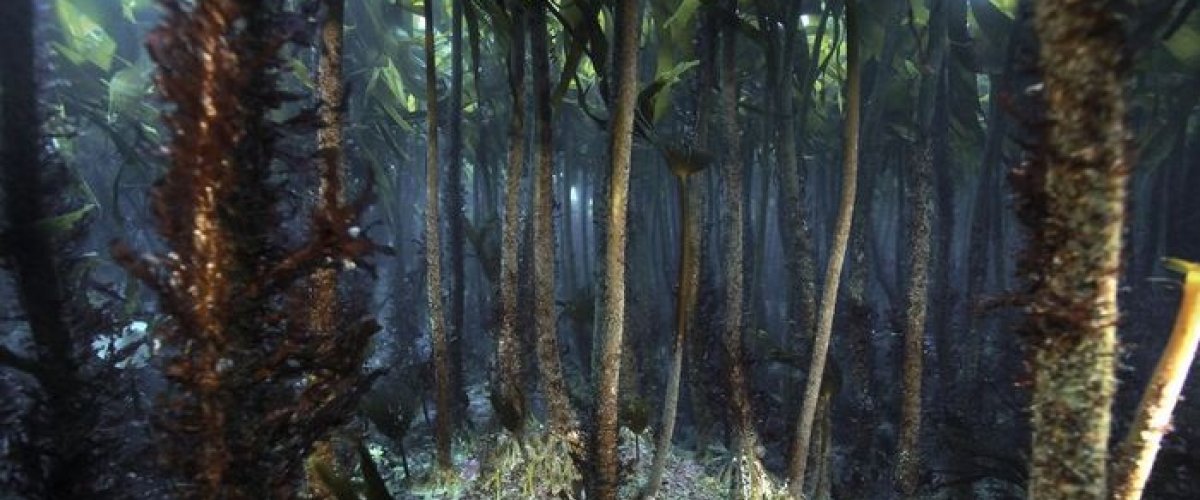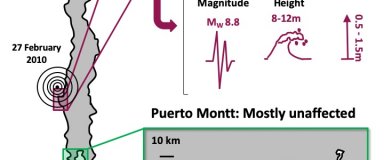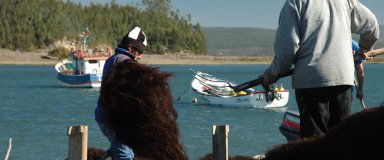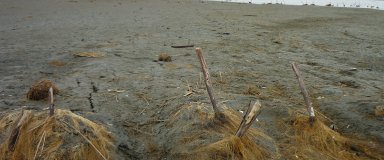After a catastrophe, a little bit of sex is better than nothing!
After a cataclysm, having sex seems like a waste of time and energy. However, a new study published in Evolutionary Applications shows that sexual reproduction is essential for better long term resilience of populations. Researchers from the Franco-Chilean International Joint Unit of the Roscoff Biological station (CNRS, Sorbonne University) and the University Austral de Chile (UMI 3614, Evolutionary Biology and Ecology of Algae), from UMR 1349 (INRAE, Le Rheu) and the Department of Ecology (Catholic University of Design, UCSC, Chile) studied the recovery and genetic dynamics of sexual and asexual algal populations before, few days after and two years after a massive earthquake followed by a major tsunami strong enough to locally modify Chilean coasts and induce brutal environment changes.
Reference of the paper :
Becheler R., Guillemin M-L., Stoeckel S., Mauger S., Saunier A., Brante A. , Destombe C.& Valero M. (2020). After a catastrophe, a little bit of sex is better than nothing: Genetic consequences of a major earthquake on asexual and sexual populations. Evolutionary Applications.
We have rare opportunity to compare genetic changes and the resilience of sexual versus asexual populations before and after major natural disasters, such as tsunamis and earthquakes, due to their unpredictable nature. This study analyses the consequences of an earthquake of magnitude 8.8 on the Richter scale (February 27, 2010, in the region of Concepción in Chile) on the fate of wild and cultivated populations of the red alga Agarophyton chilense, living on impacted and unimpacted coasts of Chile.
Researchers monitored over a decade the genetic diversity of wild populations – reproducing through sexual reproduction– and cultivated populations – clonally propagated by cuttings and replanting vegetative fragments of the fronds– in two regions: Concepción near the epicentre, strongly impacted by the earthquake with deep environmental and geological changes, and Puerto Montt located 600 km to the south, unimpacted (Figure 1). Data were analysed distinguishing three sequences: before the earthquake and the tsunami of February 2010, the days which followed and two years after.
The study evidences strong disturbances in the genetic structure in the impacted area following the disaster, while no change occurred in the unimpacted region.
In the impacted area, the fully sexual wild populations experienced a loss of genetic diversity in the months that followed the earthquake. But, two years later, they recovered the level of genetic diversity they had before the disaster. Such resilience is explained by the integration of immigrants from distant sexual populations that mixed with local surviving genotypes.
On the other hand, the fate of cultivated populations shows that clonal reproduction provides a surprising capacity to buffer the instantaneous loss of diversity and mortality. But, two years later, half of the cultivated populations had disappeared and, in the survivors, genetic diversity has dropped while cultivators rescued populations by cuttings.
The contrasting fates of the sexual and asexual populations in the region close to the epicenter, suggest that betting on a strictly clonal mode of reproduction to maintain the production of algal cultures is risky in the long term despite apparent instantaneous benefits. By reducing genetic diversity to a few genotypes, this extreme strategy probably reduces the possibilities of resilience of cultivated algae to brutal environmental disturbances induced by natural disasters. That’s why integrating few sexual events in algal production should become a standard for sustainable population management.
Figure 1 modified from Fig 1 in Becheler et al. (2020) The six cultivated populations (squares) and seven wild populations (rounds) sampled before and after the earthquake and tsunami of February 27, 2010 whose epicentre was near Concepción. The populations located in the highly impacted Concepción region are in red while those in the weakly impacted Puerto Montt region are in green. The estimated magnitude of the earthquake (Richter scale) experienced at Concepción and Puerto Montt, the height of the tsunami waves and the coastal uplift values were taken from Castilla et al. (2010) and Vargas et al. (2011)
Two months after the earthquake and the uprising of several meters of land, the algae fields of the Tubul farm are decimated, a few individuals survive in the mud, in the foreground, we can see Agarophyton individuals desiccated. At the bottom, you can see a bridge destroyed by the earthquake (photo credit: C Valdovinos, Universidad de Concepción, Chile).
CONTACT
UMI 3614, Evolutionary Biology and Ecology of Algae, CNRS, Sorbonne Université, Universidad Austral de Chile, Pontificia Universidad Católica de Chile, Station Biologique de Roscoff, CS 90074, 29688 Roscoff, France
Myriam Valero : valero@sb-roscoff.fr











